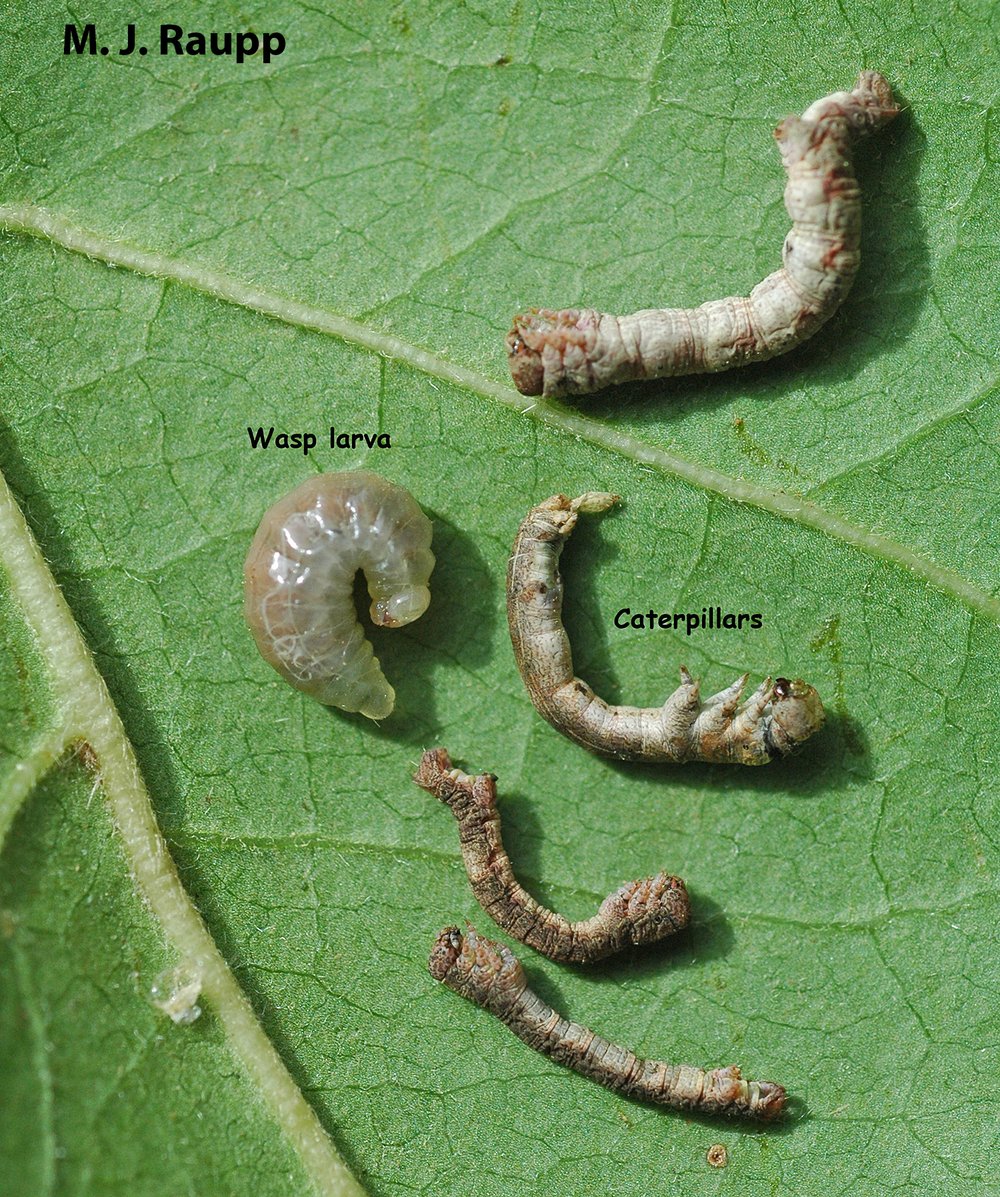
Cradling a fresh ball of mud, this pretty female potter wasp gets ready to put finishing touches on clay pots provisioned with caterpillars for her developing youngsters.

Green and brown caterpillars and a legless wasp larva filled the pot of a potter wasp discovered in my garden in Columbia, Maryland.
This week we return to Borneo and to a lodge on the banks of the Kinabatangan River where a vendor set up a small table of their wares. Amongst the colorful trinkets, a large potter wasp decided to set up shop and build a series of clay pots which would be the nurseries for her offspring. Nests are often built on sunny exposed structures such as on tree trunks, rocks, or buildings, but in this case a somewhat shaded display table worked just fine. After finding just the right blend of muddy clay soil near the riverbank, the female wasp gathers it into a ball and transports it to the nest site. Using mouthparts and legs, the clay is molded into to an oblong pot cemented to the underlying substrate.
While the pot is still unsealed, mom lays an egg inside the pot, attached to the clay by a silken strand. She then goes into the forest to hunt caterpillars, the larvae of moths and butterflies. Hapless caterpillars are stung and paralyzed but not killed by the venom. Immobilized and defenseless, the caterpillars become a stable source of fresh meat for the developing wasp larva. Once captured by the wasp, the hapless caterpillars are carried back to her nest and stuffed into the pot. Often several different species of caterpillars will be used as a food source. In one study the number of caterpillars found in each chamber ranged from 4 to 9.
This small table of trinkets holds a surprise, the nest of a potter wasp. Watch as she crafts a clay pot and then flies off to find a caterpillar that will serve as food for her young. She stings the caterpillar with paralytic venom and stuffs it into the pot which already contains her egg. The caterpillar is fresh meat for her spawn. The pot is sealed with a glob of mud and after a drink of water, off she goes to hunt for mud and caterpillars to start the next pot.

What wonders lie within this diminutive piece of earthenware adorning a rock wall in my garden?
With sufficient food available for her baby to develop, the pot is sealed with another glob of mud and construction of the next pot begins. Each pot in the nest requires no more than a day to build and provision. Individual pots are added to existing ones and some potter wasp condos may consist of more than 20 individual chambers with growing wasp larvae inside. The entire multi-pot construct is then sealed with a layer of mud to help thwart predators and parasitoids intent on making a meal of paralyzed caterpillars and developing wasp larvae.

Potter wasps eat nectar and pollen when not throwing pots.
This Bornean potter wasp is part of a large widely distributed clan of more than 3,000 wasps known as the Eumeninae. In a previous episode, we met pretty potter wasps in the genus Ancistrocerus in Maryland where we commonly see adults feeding on the nectar and pollen of goldenrods in autumn.
Acknowledgements
The informative article “Nesting Behaviour of Potter Wasp, Delta pyriforme (Fabricius) (Hymenoptera: Eumeninae) from the Koradi Region, Dist, Nagpur, Maharashtra” by Chanchal R. Deshmukh was consulted to prepare this article. Thanks to Dan, Kristie, Bob, Pat, and Paula for helping spot and study potter wasps in Borneo.
No comments:
Post a Comment